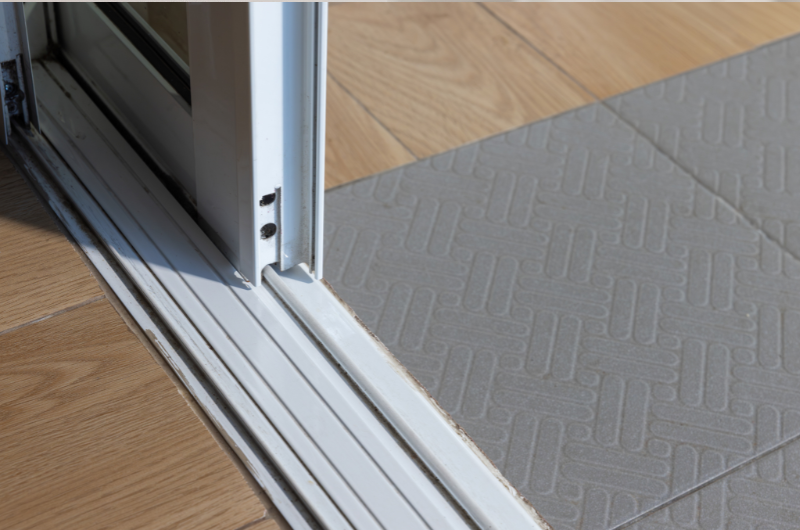Door thresholds are one of those features in a home that you rarely notice—until something goes wrong. But whether you’re draught-proofing your front door, upgrading your flooring, or simply improving the look and function of a room, a good threshold can make all the difference. For UK homeowners, especially with the country’s damp weather and varied housing stock, understanding thresholds is key to maintaining a warm, efficient, and well-presented home.
What Exactly Is a Door Threshold?
A door threshold is the strip installed at the base of a doorway—either external or internal—designed to bridge the gap between the bottom of the door and the floor. Common materials include wood, aluminium, rubber, and composite blends.
Thresholds play both a technical role, such as keeping out cold air and rain, and an aesthetic one, helping to create a clean, cohesive finish between different rooms or flooring types.
Types of Door Thresholds Available in the UK
Door thresholds in the UK come in a range of styles and materials to suit different needs—whether you’re sealing an exterior door, bridging uneven flooring, or adding a decorative touch indoors. Here’s a quick overview of the main types:
1. Weatherbar / Rain Drip Thresholds
Often used on external doors, these are designed to deflect rainwater away from the bottom of the door. Usually made from aluminium or uPVC, they’re essential for keeping water out—especially in exposed or older properties.
2. Timber Thresholds
A traditional choice, timber thresholds (often made from oak, mahogany, or softwoods) are commonly found in period homes. They offer a natural look but may require sealing or maintenance to prevent warping from damp.
3. Metal Threshold Strips
Aluminium and brass thresholds are highly durable, low-maintenance, and suitable for both interior and exterior use. They’re ideal for high-traffic areas and can be found in either a brushed, polished, or anodised finish to match décor.
4. Ramp Thresholds (Accessible Thresholds)
These are sloped strips that help bridge height differences between rooms, commonly used for wheelchair access or to comply with UK Building Regulations Part M. They’re often made of metal or rubber.
5. Floor Transition Strips
These are typically used indoors to create a neat junction between two types of flooring—like carpet to laminate, or tile to vinyl. Available in various finishes, they’re both decorative and practical.
6. Thermal Break Thresholds
These advanced thresholds feature an insulating core (usually in aluminium models) to prevent cold bridging, making them ideal for energy-efficient or passive homes.
Technical Benefits of Thresholds in UK Homes
1. Draught Exclusion
With the UK’s often unpredictable weather, an exterior door threshold can help prevent cold air from seeping in, especially when paired with a door seal or brush strip.
2. Moisture Control
Rain is a constant concern in many parts of the UK. A well-fitted threshold can prevent water ingress, protecting wooden floors, carpets, and skirting boards from damage.
3. Energy Efficiency
By sealing the gap under your doors, thresholds contribute to better insulation, reducing heat loss and lowering energy bills—particularly important in older homes where floors may be uneven or less airtight.
4. Accessibility and Safety
For internal doors, thresholds help smooth the transition between different flooring types (e.g., tile to carpet), and when installed properly, reduce trip hazards. Low-profile options also help maintain accessibility for those using mobility aids or prams.
Aesthetic Value
A threshold isn’t just practical—it’s also a finishing touch that can enhance the look of your home:
-
Blends and Transitions: Whether you have wood flooring in the hall and tiles in the kitchen, a threshold strip creates a neat division between materials.
-
Material Coordination: Options like oak, brushed brass, or matte black aluminium can be matched to flooring or décor.
-
Concealment or Statement: Some homeowners prefer thresholds that blend in; others use them as a subtle design feature to frame a doorway or divide open-plan spaces.
Potential Issues After Installation
Even with the best intentions, a poorly fitted or worn threshold can cause trouble. Here are some common problems UK homeowners encounter:
1. Warping from Moisture
Wooden thresholds may absorb moisture over time—especially near entrance doors—leading to warping, swelling, or rot.
2. Draughts and Leaks
If the threshold isn’t level or the seal isn’t tight, you may still get cold air or rain sneaking in. This is especially common in older properties with shifting foundations or uneven flooring.
3. Squeaks or Movement
With daily foot traffic, a loose or poorly secured threshold can shift or creak, becoming both a nuisance and a hazard.
4. Tripping Hazard
Thresholds that sit too high or aren’t level with adjacent flooring may cause stumbles—particularly risky for children, the elderly, or guests unfamiliar with your home.
5. Worn Finish
In busy areas, the threshold may become scuffed or faded. Regular cleaning and, in some cases, refinishing or replacing the strip will keep it looking tidy.
Final Thoughts for Homeowners
In UK homes where the battle against damp, draughts, and wear is constant, door thresholds provide a small but powerful line of defence. They’re essential for comfort and efficiency—and when chosen well, they can enhance your home’s visual appeal too.
If you’re replacing floors, upgrading a front door, or simply trying to reduce heat loss, take the time to assess your thresholds. A well-selected and properly installed threshold won’t just look good—it’ll work hard in the background, season after season.



